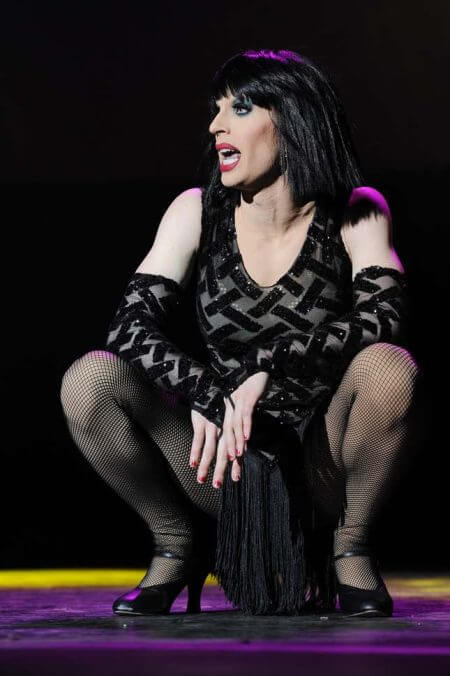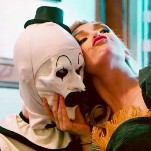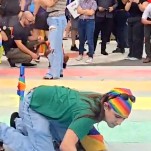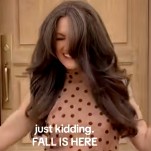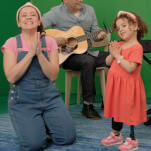Drag Race Alum Katya Zamolodchikova Revels in the Embarrassment of Being Alive
Entertainment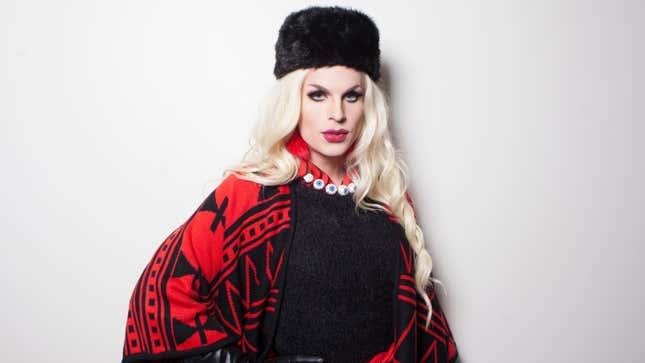
Image: Getty
Laurel Park is an idyllic, tucked-away pocket of West Hollywood, the front portion of a historic neighborhood home that was turned into public space in 2011. The colonial mansion was purchased in 1924 by pioneering cinema exhibitor Adolph Linick, a relic of the city’s legacy, but on a sticky early December afternoon, the park is mostly filled with women in leggings walking small dogs. It is not exactly the kind of place you’d expect to find two people talking about the perils of at-home anal waxing, but that’s what beloved RuPaul’s Drag Race alumnus Katya Zamolodchikova and I are doing. “It’s horrible! HOR-I-BLE,” she says smacking the picnic table we’re sitting at between each syllable. If you know Katya from TV or, maybe more likely, YouTube, then animated candor is what you’re expecting. This is how Katya does: she’s lighthearted and a little gross, salacious but kind of silly about it; she repeats, over and over, the words or phrases she wants to emphasize until she’s tried each on in the right tone of voice; she’s the kind of person whose creative output gets called “a beautiful obscenity” by the Godfather of Filth, John Waters.
Her frank and charming out-of-drag confessional interviews—and the bravery it took to talk about her addiction to alcohol, cocaine, and crystal meth—on Season 7 of Drag Race were what endeared her to the public in the first place. Voted Miss Congeniality of her season because of her authentic ability to float between the aesthetic-curious younger queens and the traditional old guard, she made it to the top 5 and was runner-up on All-Stars 2 the following year. Her loss is still considered an upset to fans, who wait hours on her meet-and-greet lines at events like RuPaul’s DragCon and the U.K. convention Dragworld. Last year, a teen brought her roommate’s freeze-dried amputated leg for Katya to pose with during a pre-show photo op; her fans—a lot of them teen girls— hang onto her eccentricities. “When I started touring, I used to sign every headshot I had with Bush did 9/11 for like two years. Last week I posted this thing about blush and someone responded ‘Blush did 9/11,’” she says.
“There’s no peeing in drag.”
But right now is a time for rest. “I’m just sleeping, eating, going to the bathroom,” she says. Wouldn’t her work-life include going to the bathroom? “There’s no peeing in drag,” she says, shaking her head.
Before this extended bathroom break, which ends with a short U.K. jaunt in February, Katya spent 2019 on the road with a solo show called Help Me, I’m Dying. The show is a pastiche of her lip-synching (both in Russian and English), monologuing, and engaging with the crowd, which she does as a character called Trish. Katya says the Trish portion of the show is very broad and slap-sticky, but the material from which Trish comes, a 10-video series titled Irregardlessly Trish, is a lot more focused and one of the best things Katya has ever done. It is pseudo-vérité that follows a dumpster-living, AA-evading trainwreck with a thick Boston accent and a permanent vat of Dunkin Donuts iced coffee who cuts hair out of her mom’s garage. In each video, Trish meanders through her city, opining about womanhood, addiction, and the embarrassment of being alive—it’s existentialism espoused with wet brain.
Katya’s ability to volley between these characters is likely a product of her conceptual art studies at Massachusetts College of Art in the early 2000s. She describes the work she did in school as “good old ’70s performance art” and cites the radical mundanity of the Judson Dance Theatre and audience antagonism of Merce Cunningham as influences. Lip syncing became part of her oeuvre after she and a few of her art school friends went to see David Lynch’s Mulholland Drive. A scene in which singer Rebekah del Rio lip-syncs to her own Spanish cover Roy Orbison’s “Crying” before passing out on the stage summed up Katya’s artistic ethos and reflected it back to her from the screen. “I watch that scene now and I’m like, this is what I like about performance art: having this crazy reaction to something and it’s not real,” she says. “You are being tricked the whole time.”
-

-

-

-

-

-

-

-

-

-

-

-

-

-

-

-

-

-

-

-

-

-

-

-

-

-

-

-

-

-

-

-

-

-

-

-

-

-

-

-

